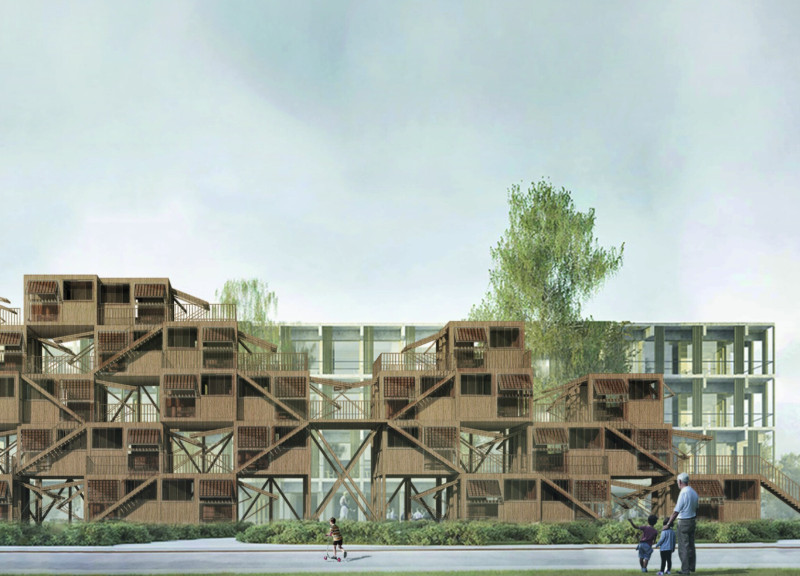5 key facts about this project
This project represents a collaboration between modern architectural practices and traditional values, ensuring that it resonates with both current needs and historical context. The building's function, whether it be residential, commercial, or institutional, is clearly articulated in its design, allowing for an excellent flow of spaces that support various activities. This spatial organization prioritizes functionality while providing an inviting atmosphere for occupants and visitors alike.
Throughout the design, several important components contribute to the overall success of the project. The entrance is characterized by a welcoming façade, featuring ample glazing that allows natural light to flood the interior spaces. This use of glass not only enhances visibility but also creates a strong connection between the interior and the exterior. The transparency fosters a sense of openness, promoting a welcoming environment that encourages interaction.
Inside, the layout is designed with careful consideration of circulation and accessibility. Key areas are thoughtfully arranged to facilitate movement, ensuring that users can navigate the space effortlessly. The incorporation of versatile spaces allows for multifunctional use, catering to a variety of needs without compromising on comfort or practicality. The choice of materials throughout the project is deliberate; warm woods paired with sleek metals offer a balance of durability and aesthetic appeal. The materials not only contribute to the visual narrative of the architecture but also align with sustainability principles, showcasing the project’s commitment to eco-friendly practices.
Moreover, the building's roof design is a unique aspect that deserves attention. It incorporates green elements, such as living roofs or solar panels, which serve dual purposes: enhancing the building’s energy efficiency while contributing to biodiversity. This approach reflects a growing trend in architecture towards environmentally responsible design, where structures not only serve their immediate function but also contribute positively to the surrounding ecosystem.
Unique design approaches employed in this project further elevate its architectural significance. For instance, the integration of passive design strategies helps to optimize energy consumption, reducing reliance on artificial heating and cooling systems. This is evident in the strategic placement of windows to capture prevailing winds for natural ventilation, as well as the thoughtful shading devices that minimize solar gain. Such features demonstrate an advanced understanding of the local climate and the architectural response needed to maintain comfort year-round.
Attention to detail is evident throughout the project. The careful selection of finishes, from flooring to wall treatments, ensures that every aspect of the design contributes to a cohesive whole. Details such as custom furnishings and integrated technology are designed to enhance user experience without overwhelming the simplicity of the overall architectural language.
Engaging with this project allows one to appreciate the depth of thought that has gone into its realization. It invites further exploration into its architectural plans, sections, and designs that highlight the innovative ideas that define it. By examining the intricate details and overarching themes of this project, one can gain a deeper understanding of contemporary architectural trends and the ongoing dialogue between design, functionality, and sustainability. For a comprehensive insight, readers are encouraged to delve into the project presentation, where various elements can be explored in greater detail.


























